
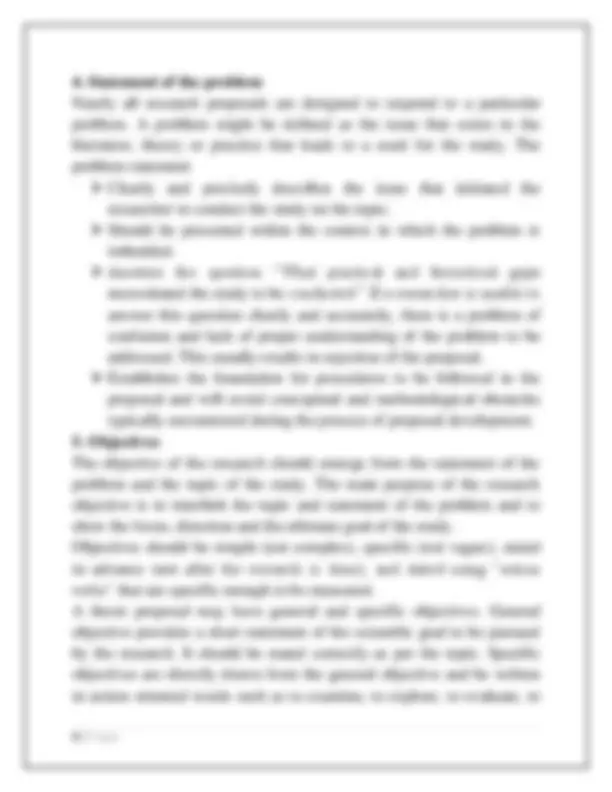
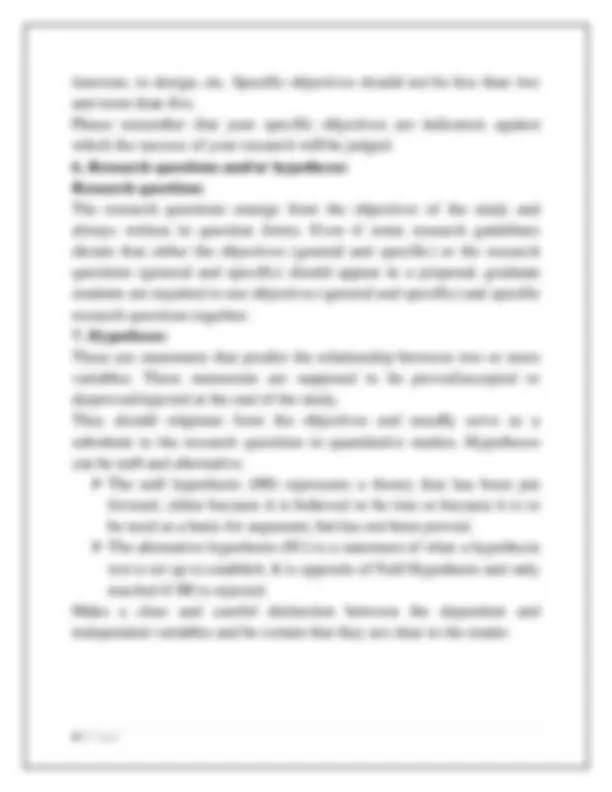
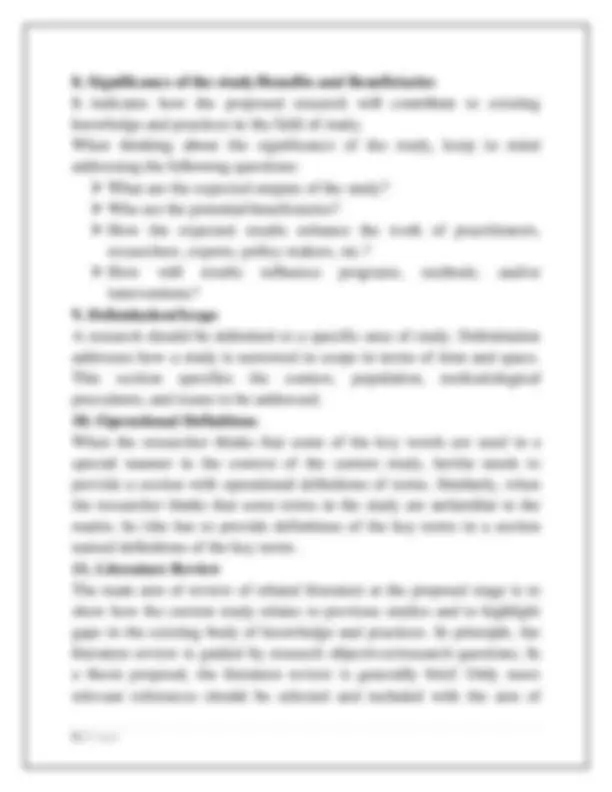
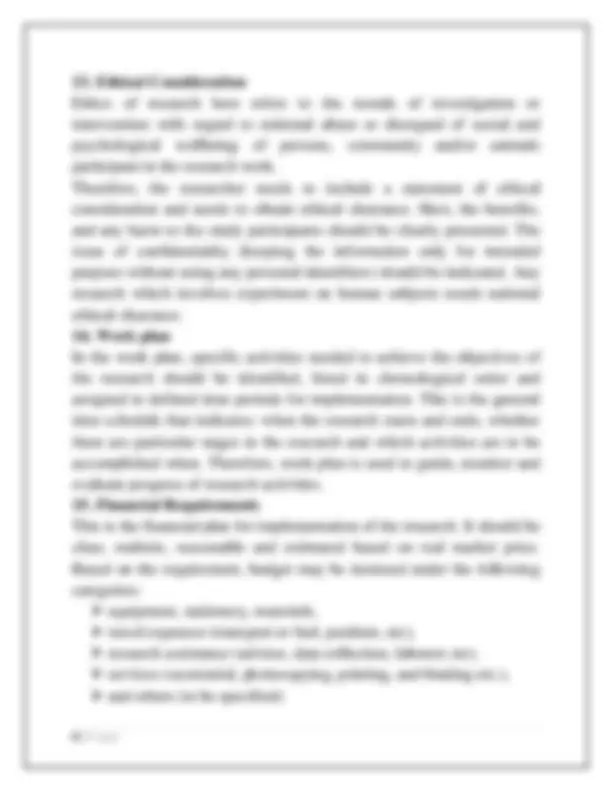
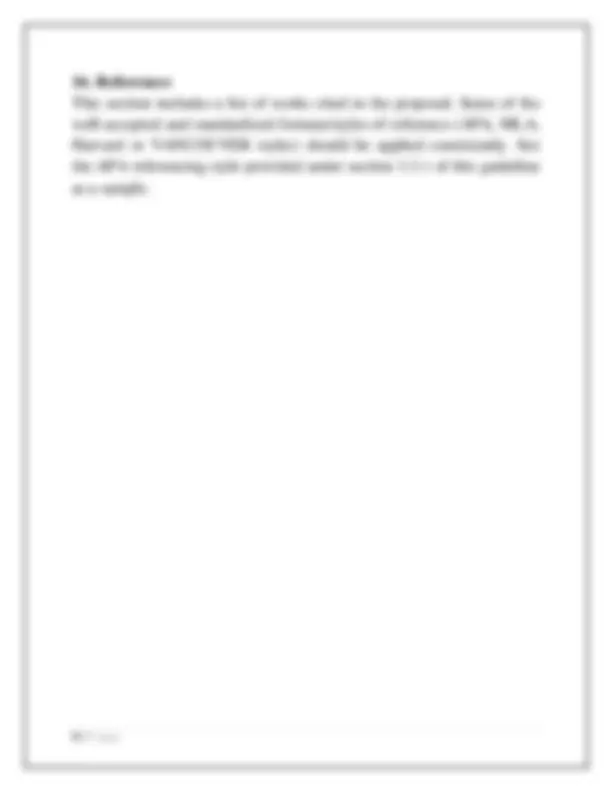
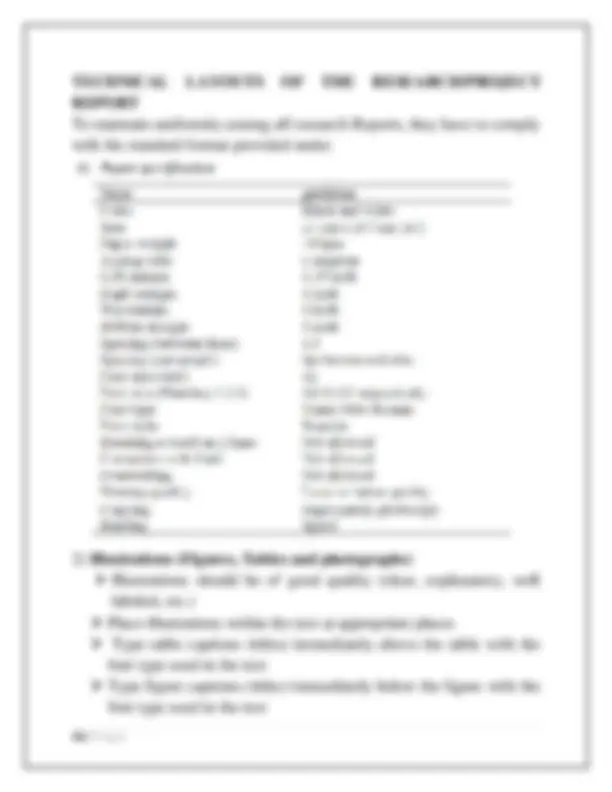
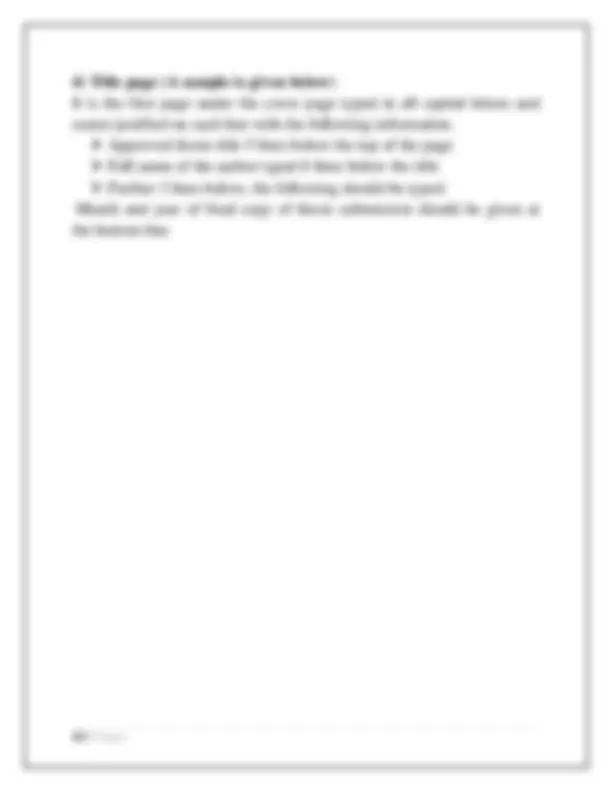
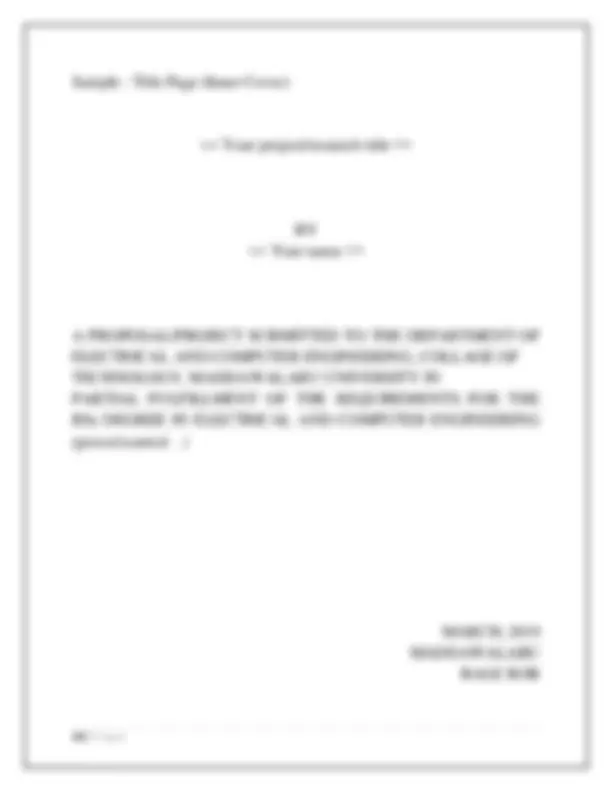
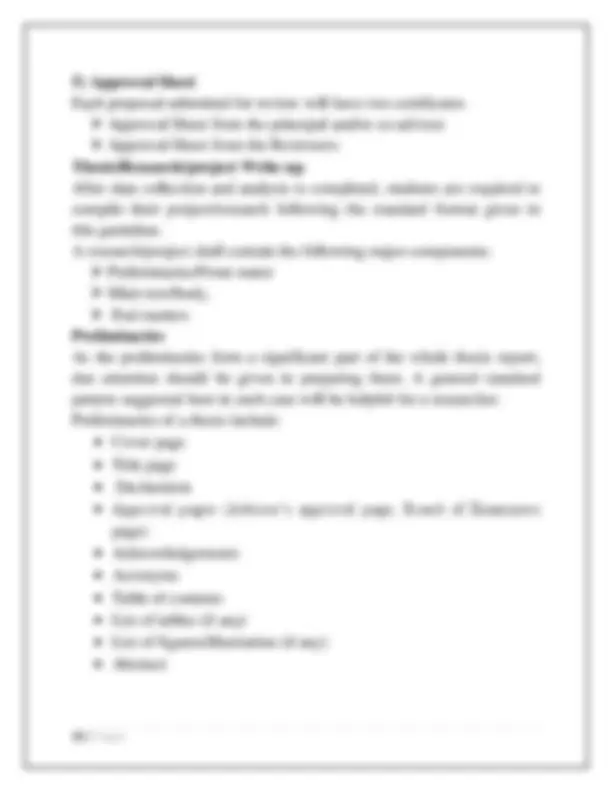
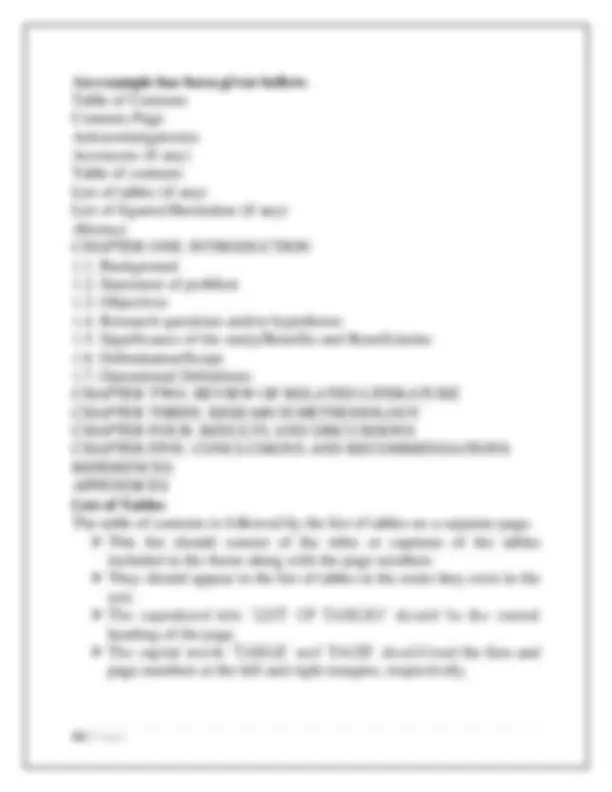


Study with the several resources on Docsity

Earn points by helping other students or get them with a premium plan


Prepare for your exams
Study with the several resources on Docsity

Earn points to download
Earn points by helping other students or get them with a premium plan
Community
Ask the community for help and clear up your study doubts
Discover the best universities in your country according to Docsity users
Free resources
Download our free guides on studying techniques, anxiety management strategies, and thesis advice from Docsity tutors
Research proposal for writting standards
Typology: Study Guides, Projects, Research
1 / 18

This page cannot be seen from the preview
Don't miss anything!











The thesis proposal shall contain the following elements. Title Introduction Background Statement of problem Objectives Research questions and/or hypotheses Significance of the study/Benefits and Beneficiaries Delimitation/Scope Operational Definitions Literature review Research Design /Methods and Procedures/Materials and Methods/ Ethical Consideration Work plan Financial Requirements References
Details of these components are provided hereby.
1. Title Research proposal title should demarcate the main focus or theme of the proposed study. It should be informative/descriptive yet discrete and contain the key words of the proposal. In addition, it should be concise, simple and appealing. Preferably, it should not exceed 15 words.
2. Introduction The introduction should set the background to the study, give a clear and concise statement of the problem including objectives and research questions of the study or the hypothesis involved, significance of the study, definitions of the important terms, and scope/delimitation of the study. These are described in the following subsections. 3. Background This section has to provide background information starting from broader perspective of the topic to be studied leading to the specific problem to be addressed. This part usually integrates review of related literature to place the study within the larger context of the scholarly literature. The purpose of this section is to lay the broad foundation for the problem that leads to the study, to create reader interest in the topic, and to make the reader feel the urgency of the problem and the need to study it. In writing, it particularly: Starts from already known theoretical framework of the study topic. Review related literature to show gaps in the existing knowledge and practice so as to provide justification for the current research Concisely sets the aims of the research and show how it fills the identified gaps in the literature and practice. Please note that the background section gives you an opportunity to show that you have a good knowledge of the body of literature, the wider context in which your research belongs and that you have awareness of methodologies and related theories.
innovate, to design, etc. Specific objectives should not be less than two and more than five. Please remember that your specific objectives are indicators against which the success of your research will be judged.
6. Research questions and/or hypotheses Research questions The research questions emerge from the objectives of the study and always written in question forms. Even if some research guidelines dictate that either the objectives (general and specific) or the research questions (general and specific) should appear in a proposal, graduate students are required to use objectives (general and specific) and specific research questions together. 7. Hypotheses These are statements that predict the relationship between two or more variables. These statements are supposed to be proved/accepted or disproved/rejected at the end of the study. They should originate from the objectives and usually serve as a substitute to the research questions in quantitative studies. Hypotheses can be null and alternative. The null hypothesis (H0) represents a theory that has been put forward, either because it is believed to be true or because it is to be used as a basis for argument, but has not been proved. The alternative hypothesis (H1) is a statement of what a hypothesis test is set up to establish. It is opposite of Null Hypothesis and only reached if H0 is rejected. Make a clear and careful distinction between the dependent and independent variables and be certain that they are clear to the reader.
8. Significance of the study/Benefits and Beneficiaries It indicates how the proposed research will contribute to existing knowledge and practices in the field of study. When thinking about the significance of the study, keep in mind addressing the following questions: What are the expected outputs of the study? Who are the potential beneficiaries? How the expected results enhance the work of practitioners, researchers, experts, policy makers, etc.? How will results influence programs, methods, and/or interventions? 9. Delimitation/Scope A research should be delimited to a specific area of study. Delimitation addresses how a study is narrowed in scope in terms of time and space. This section specifies the context, population, methodological procedures, and issues to be addressed. 10. Operational Definitions When the researcher thinks that some of the key words are used in a special manner in the context of the current study, he/she needs to provide a section with operational definitions of terms. Similarly, when the researcher thinks that some terms in the study are unfamiliar to the reader, he /she has to provide definitions of the key terms in a section named definitions of the key terms. 11. Literature Review The main aim of review of related literature at the proposal stage is to show how the current study relates to previous studies and to highlight gaps in the existing body of knowledge and practices. In principle, the literature review is guided by research objectives/research questions. In a thesis proposal, the literature review is generally brief. Only more relevant references should be selected and included with the aim of
12. Research Methodology This section might be named „Methods and Procedures‟, „Materials and Methods‟, „Research Methodology‟ depending on the agreements in different fields. In this section, the researcher needs to identify and provide detailed step-by-step description of the methodology in the study so as to enable a reviewer or any other reader to clearly understand it. Thus, the section describes the design opted for the study, subjects/participants used to provide data, tools/methods used to gather data, and procedures followed to collect and analyze data. Specifically, the section includes: Description of the study area Description of study design (historical, descriptive survey, experimental or quasi experimental, mathematical modeling, etc.) Description of study participants/subjects Determination of sample size and selection process (sampling techniques) Methods (tools) of data collection Strategies of ensuring data quality Description of materials and procedure Description of your methods of data analysis, including reference to any specialized statistical software and simulation models (e.g., ANOVA, MANCOVA, AQUAD, SAS, SPSS, SYSTAT, STATA, EVIEW, Matlab, ETAP, DigSELINT, HOMER, POWER WORLD, PSCAD, PROTUS, PSIM……………. etc) In some studies as a part of the research design conceptual framework/theoretical framework/analytical framework is included. It provides the structure/content for the whole study. Make sure that this section is written in the future tense at the proposal stage.
13. Ethical Consideration Ethics of research here refers to the morals of investigation or intervention with regard to minimal abuse or disregard of social and psychological wellbeing of persons, community and/or animals participate in the research work. Therefore, the researcher needs to include a statement of ethical consideration and needs to obtain ethical clearance. Here, the benefits, and any harm to the study participants should be clearly presented. The issue of confidentiality (keeping the information only for intended purpose without using any personal identifiers) should be indicated. Any research which involves experiment on human subjects needs national ethical clearance. 14. Work plan In the work plan, specific activities needed to achieve the objectives of the research should be identified, listed in chronological order and assigned to defined time periods for implementation. This is the general time schedule that indicates: when the research starts and ends, whether there are particular stages in the research and which activities are to be accomplished when. Therefore, work plan is used to guide, monitor and evaluate progress of research activities. 15. Financial Requirements This is the financial plan for implementation of the research. It should be clear, realistic, reasonable and estimated based on real market price. Based on the requirement, budget may be itemized under the following categories: equipment, stationery, materials, travel expenses (transport or fuel, perdiem, etc), research assistance (advisor, data collection, laborers etc), services (secretarial, photocopying, printing, and binding etc.), and others (to be specified).
To maintain uniformity among all research Reports, they have to comply with the standard format provided under.
Table and figure titles should be single spaced and aligned justified 3) Cover page (A sample is given below) Typed in all capital letters, should include Approved thesis title typed in the middle of the page Name of the degree, e g. Bsc/M.Sc./MA… Thesis/research/project Full name of the author typed in the middle of the page Name and location of the University Month and year of thesis submission typed 5 cm above the bottom margin
4) Title page (A sample is given below) It is the first page under the cover page typed in all capital letters and center justified on each line with the following information. Approved thesis title 5 lines below the top of the page Full name of the author typed 8 lines below the title Further 3 lines below, the following should be typed: Month and year of final copy of thesis submission should be given at the bottom line
Sample : Title Page (Inner Cover)
<< Your project/research title >>
<< Your name >>
BSc DEGREE IN ELECTRICAL AND COMPUTER ENGINEERING (power/control…)
Cover page Typed in all capital letters, should include Logo of the university (3 cm diameter) in the middle top of the page Thesis title typed in the middle of the page Name of the degree, e g. BSc/M.Sc./MA… Thesis/project in the middle of the page Full name of the author typed in the middle of the page Name and location of the University on bottom right corner Month and year of thesis submission typed 5 cm above the bottom margin below the name of the university Title Page This is the second page of a thesis. It includes: Title of the thesis Name of the candidate Purpose or relationship of the thesis to the requirement College/institute/school and/or department to which the candidate submits the thesis Name of the university to which it is submitted Month and year of submission Declaration The thesis shall contain a statement(s) of the student declaring (Appendix 13) that the thesis presented is the result of the student‟s own original work, all related works in the study are duly acknowledged and that it has not been submitted in candidature for a degree/diploma of this or any other university.
Approval pages Two forms of approval pages are to be provided: advisor‟s and board of examiners. Advisor‟s approval page should state that the thesis presented is done under his/her supervision and is recommended for evaluation. Board of Examiners approval page indicates that the thesis is read, critically commented, defended, and comments and suggestions are incorporated. Thus, the thesis/Project is accepted and approved in the eyes of the examiners. Acknowledgement This includes provision of credit to persons and organizations that have made helpful contributions or support to the investigator for the successful completion of the study. The support could be financial, professional, moral or in other form. Since this is an academic and secular document, you should not be religious in your acknowledgment. Table of Contents Table of contents provides an outline of the contents of the thesis/project report. Contents should neither be too detailed nor should too sketchy. The section: Starts listing the preliminaries: like acknowledgement, list of tables, list of figures, abstract and their respective pages in small Roman numbers Continues with main chapter headings and the essential sub- headings in each section with appropriate page numbers in Arabic numerals against each. Finalizes with the end matters such as appendices, and indexes.